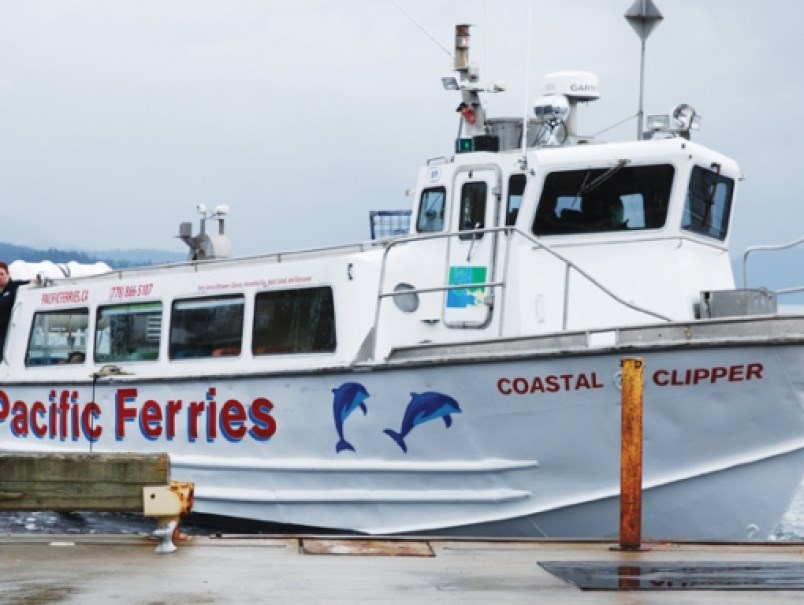Gibsons Coun. Aleria Ladwig, who commutes to Vancouver regularly for her job, is hoping to see the Town continue to push for a passenger ferry link to the Lower Mainland.
Council had its first chance to discuss a passenger ferry feasibility study prepared for the Town by the Sunshine Coast Regional Economic Development Organization (SCREDO) at its Dec. 18 meeting.
Before her election to council, Ladwig worked with the Town to approach the transportation minister about a provincially subsidized service similar to the model of the Gambier/Keats Island route that BC Ferries runs in partnership with a private company.
The SCREDO study was commissioned to give the minister some baseline information on the costs and how large a provincial subsidy might be required to get the service up and running.
The study found that for a service to be viable, it would have to carry at least 40 passengers a trip for a minimum fare of $20 to cover projected costs that run from just over $500,000 per year for a single daily round-trip to Horseshoe Bay to around $732,000 to operate two round-trips a day to downtown Vancouver (See Sept. 28 Coast Reporter).
One finding from a commuter survey that made up part of the background for the SCREDO study stood out for Coun. Stafford Lumley.
“Over 60 per cent of the people are unwilling to pay what you currently have to pay now to ride on the ferry,” he said. “I’m not saying the project is dead, but if there’s any thought or question why something like this has trouble or how many times somebody’s tried to operate a business of a foot-passenger ferry, I’m not sure people get it – you can’t pay $5.”
Ladwig said based on her experience as a commuter, people are willing to pay as much as $20 dollars one-way for a service that’s reliable and offers sailings when commuters need them.
Citing a 2010 SCRD study that found 12 per cent of the full-time workforce on the Sunshine Coast was made up of people who commute to the Lower Mainland, Ladwig said there is a demonstrated need for better service.
“Year after year I’ve seen young families move to the Sunshine Coast to try to make a go of it here while still having some kind of economic connection to the city and after a couple years of commuting pack it in and they leave. I’ve seen this time and time and time again,” said Ladwig, who added that although BC Ferries has been more responsive to commuter concerns in the past couple of years, “it’s not acceptable that for this day and age we have a commuting service [BC Ferries] that runs once every two hours. BC Ferries’ goal is to provide hourly service in five to six years, but that’s too long for commuters to wait.”
Chief administrative officer Emanuel Machado told council that Transportation Minister Claire Trevena now has a copy of the SCREDO report.
Council did not make any specific recommendations on follow-up action.



